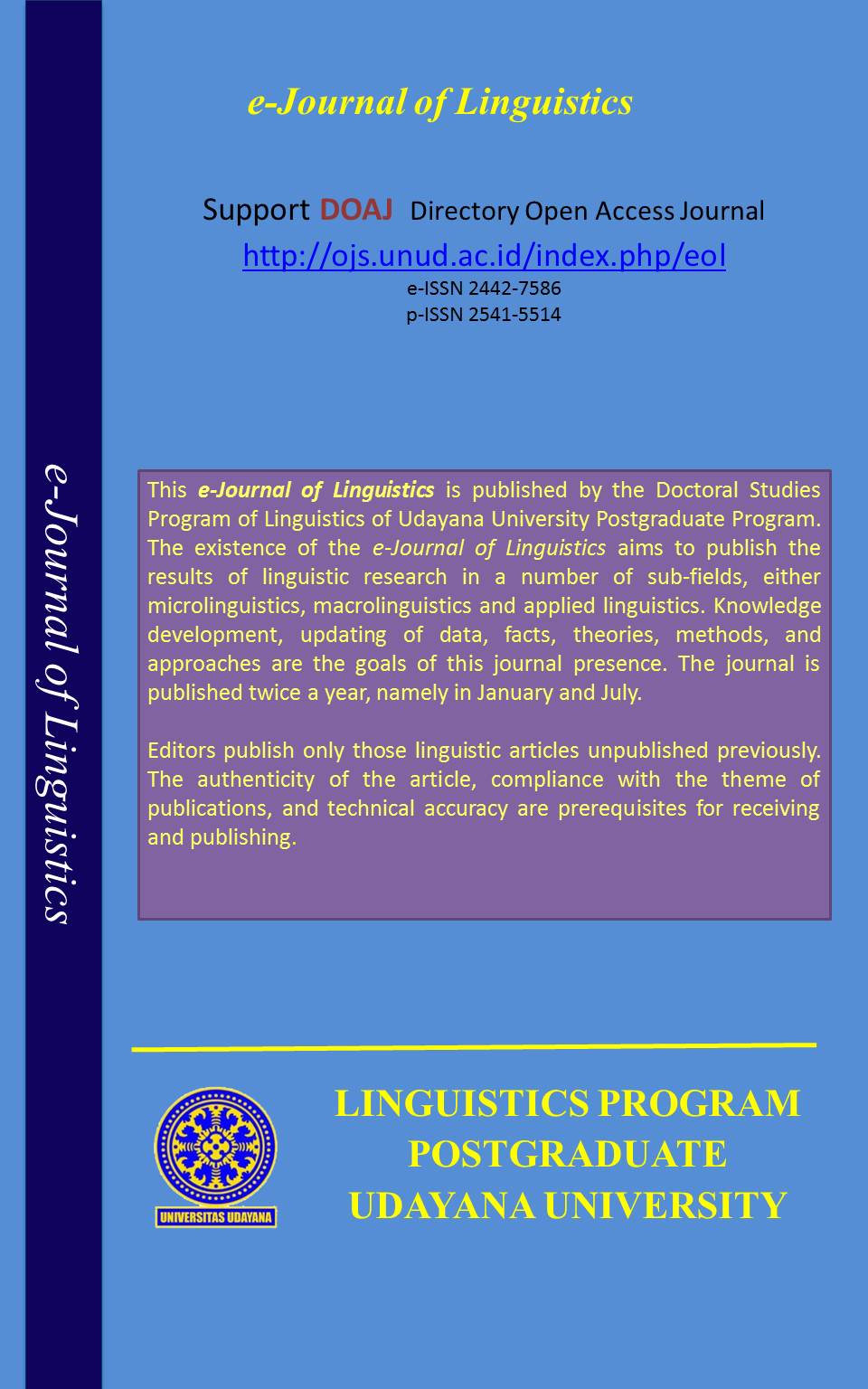10.24843 Lexical Time Words in Balinese and Japanese Language: A Typological Approach
Abstract
This research is a study of intralingual typology in the form of a contrastive study of temporal lexicon in Balinese and Japanese language. The main theory used in this study was the theory of canonical time periods proposed by Haspelmath (1997) and the classification of lexical time words proposed by Dixon (2010). The result of data analysis showed that both Balinese and Japanese have a rich variation in lexical items. Japanese is rich in vocabulary relating to qualitative time periods, especially the vocabulary that related to the seasons and day parts. Balinese is rich in vocabulary related to the name of calendar unit because Balinese uses not only the Christian year as the Japanese people, but also uses the Saka year which has a complex system and procedure for calculating the time
Downloads
References
Pan, Chia Jung. 2010. The Grammatical Realization of Temporal Expression in Tsou. Muenchen: Lincolm.
Dixon, R.M.W. 2010. Basic Linguistic Theory Volume 1: New York: Oxford University Press.
Dixon, R.M.W. 2011. Basic Linguistic Theory Volume 2: Grammatical Topics. New York: Oxford University Press.
Dixon, R.M.W. 2012. Basic Linguistic Theory Volume 3: Further Grammatical Topics. New York: Oxford University Press.
Maruyama, Masazumi. 2006. Jikan to Bunka: “Tokei jikan” to “Shizen jikan” “Dekigoto jikan”. Dalam Hashimoto Mitsuhiro, Hatakeyama Hitoshi, Maruyama Masazumi, Kyouyou toshite no Komyunikeeshon Bab 4 (hal. 148—179). Tokyo: Hokuju Shuppan.
Tompenaars, Fons dan Turner, Charles Hampden. 1998. Riding The Waves Of Culture. London: Nicholas Brealey Publishing.

This work is licensed under a Creative Commons Attribution 4.0 International License











